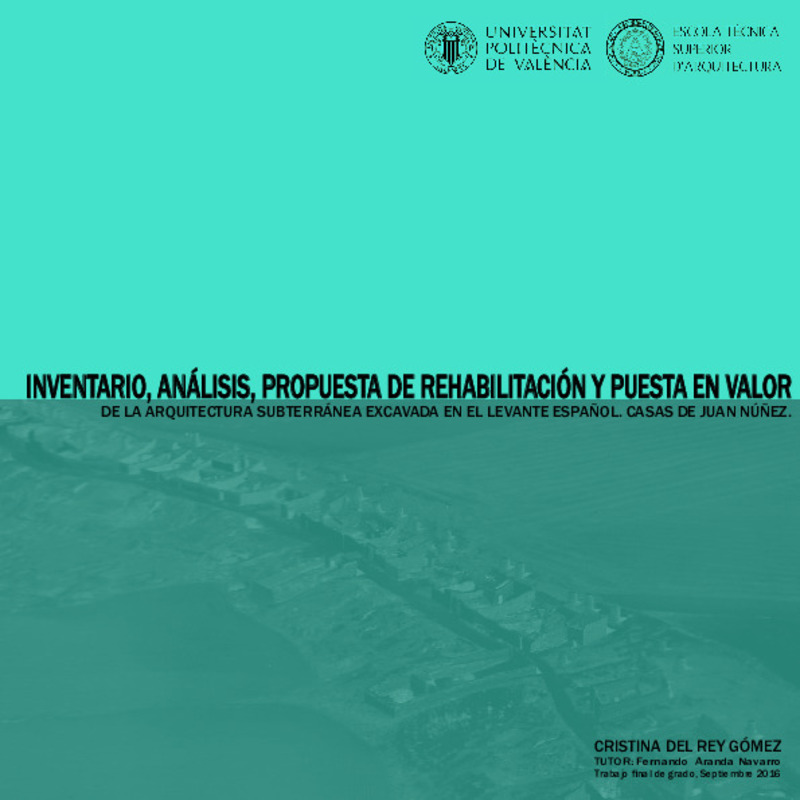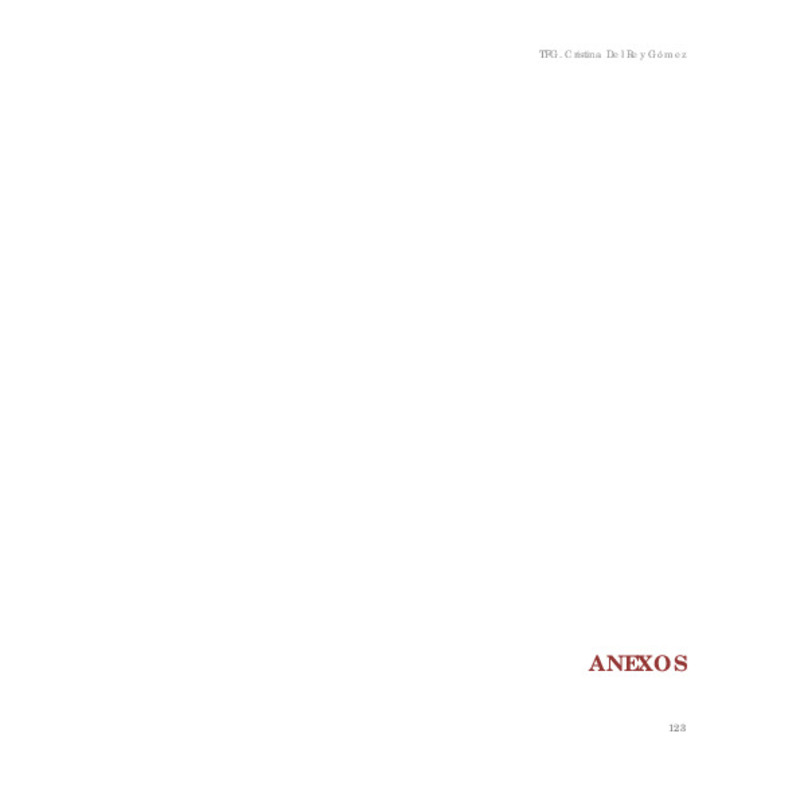JavaScript is disabled for your browser. Some features of this site may not work without it.
Buscar en RiuNet
Listar
Mi cuenta
Estadísticas
Ayuda RiuNet
Admin. UPV
Inventario, análisis y propuesta de rehabilitación y puesta en valor de arquitectura subterránea excavada en el Levante español : Casas de Juan Nuñez
Mostrar el registro sencillo del ítem
Ficheros en el ítem
| dc.contributor.advisor | Aranda Navarro, Fernando
|
es_ES |
| dc.contributor.author | Rey Gómez, Cristina del
|
es_ES |
| dc.coverage.spatial | east=-1.5579371000000037; north=39.1001905; name=02151 Casas de Juan Núñez, Albacete, Espanya | es_ES |
| dc.date.accessioned | 2017-12-07T13:49:27Z | |
| dc.date.available | 2017-12-07T13:49:27Z | |
| dc.date.created | 2016-09-15 | |
| dc.date.issued | 2017-12-07 | es_ES |
| dc.identifier.uri | http://hdl.handle.net/10251/92122 | |
| dc.description.abstract | The cave-houses are a type of subtractive architecture that is obtained by excavation. These are distributed throughout the Spanish territory. They form numerous sets of great importance. The cave-houses studied here belong to the neighborhoods of San Pedro and Azaña of the town of Casas de Juan Núñez, whose origin was around 1600. This type of architecture has special interior comfort conditions that make them different. The temperature is constant throughout the whole year because the ground has a lot of thermal inertia. On the other hand, they have some problems like natural ventilation and lighting in the interior room. Ultimately, the conservation of this architecture is necessary given that normally they are forgotten and neglected; nevertheless the cave houses are a type with great historical and architectural interest. | es_ES |
| dc.description.abstract | Las casas-cueva son un tipo de arquitectura sustractiva obtenida por excavación. Estas se distribuyen por todo el territorio español constituyendo numerosos conjuntos de gran importancia. Las estudiadas en este trabajo, pertenecen a los barrios de San Pedro y Azaña de la localidad albacetense de Casas de Juan Núñez datadas del 1600. Este tipo de arquitectura cuenta con unas condiciones de confort en el interior que las hacen especiales, debido a la gran inercia térmica que tiene el terreno la temperatura se mantiene constante a lo largo de todo el año. Por otro lado, tienen una serie de problemas como la ventilación e iluminación en las estancias interiores. Por último, la conservación de este tipo de arquitectura es necesaria debido a que normalmente se encuentran menospreciadas y olvidadas siendo una tipología de gran interés tanto arquitectónico como histórico. | es_ES |
| dc.format.extent | 123 | es_ES |
| dc.language | Español | es_ES |
| dc.publisher | Universitat Politècnica de València | es_ES |
| dc.rights | Reserva de todos los derechos | es_ES |
| dc.subject | Cave-house | es_ES |
| dc.subject | Casa-cueva | es_ES |
| dc.subject | Casas de Juan Núñez (Albacete, Castilla la Mancha) | es_ES |
| dc.subject | Inventory | es_ES |
| dc.subject | thermal inertia | es_ES |
| dc.subject | architecture excavated | es_ES |
| dc.subject | subterranean | es_ES |
| dc.subject | Inventario | es_ES |
| dc.subject | inercia térmica | es_ES |
| dc.subject | arquitectura excavada | es_ES |
| dc.subject | subterráneo | es_ES |
| dc.subject.classification | COMPOSICION ARQUITECTONICA | es_ES |
| dc.subject.other | Grado en Fundamentos de la Arquitectura-Grau en Fonaments de l'Arquitectura | es_ES |
| dc.title | Inventario, análisis y propuesta de rehabilitación y puesta en valor de arquitectura subterránea excavada en el Levante español : Casas de Juan Nuñez | es_ES |
| dc.type | Proyecto/Trabajo fin de carrera/grado | es_ES |
| dc.rights.accessRights | Abierto | es_ES |
| dc.description.bibliographicCitation | Rey Gómez, CD. (2016). Inventario, análisis y propuesta de rehabilitación y puesta en valor de arquitectura subterránea excavada en el Levante español : Casas de Juan Nuñez. http://hdl.handle.net/10251/92122 | es_ES |
| dc.description.accrualMethod | TFGM | es_ES |
| dc.relation.pasarela | TFGM\21597 | es_ES |
Este ítem aparece en la(s) siguiente(s) colección(ones)
-
ETSA - Trabajos académicos [4687]
Escuela Técnica Superior de Arquitectura







